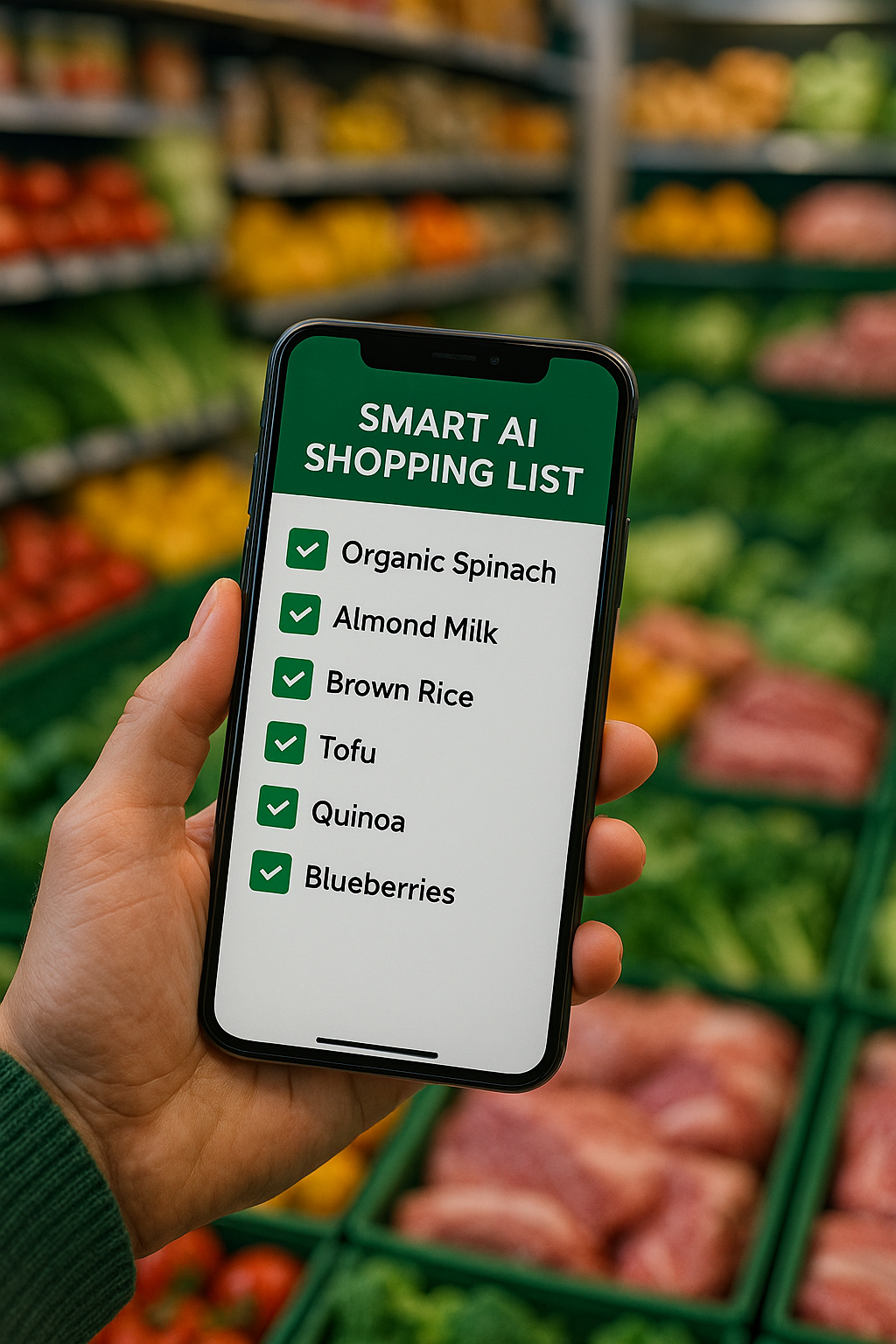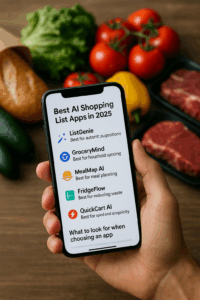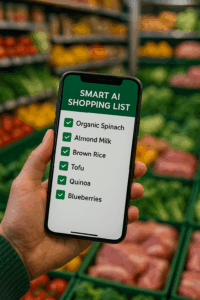Grocery lists that actually reflect your habits and preferences are hard to come by. Most of us reuse old lists or rely on memory. But modern tools are smarter than that.
With a smart AI shopping list, you can personalize every entry—whether you’re vegetarian, allergic to gluten, or just tired of buying things you never use.
The problem with one-size-fits-all lists
Paper lists, pre-made templates, and even basic grocery apps usually treat everyone the same. You start with a fixed list and cross out the things you don’t need.
Over time, this becomes a routine, but not a helpful one.
You end up with items you don’t care for, skip ingredients you’ve just run out of, and forget something simple like olive oil because it wasn’t on the default list.
A smart grocery list adapts to your life
A personalized AI grocery list is different. It doesn’t just store your data—it uses it. Each time you update or complete your list, it remembers. Over time, it learns your habits,
like how often you buy bananas or when you run low on rice.
Let’s say you always buy mushrooms every two weeks. After a few cycles, the AI will start suggesting mushrooms right when you’re likely to run out.
That means fewer forgotten items, fewer back-and-forth trips, and a list that makes sense for your kitchen.
Real-time changes based on dietary goals
If you decide to shift your eating habits—cutting sugar, going plant-based, or increasing protein—AI tools can adjust your list automatically.
Some even sync with health apps to monitor your macros or calories and match the grocery list to your goals.
For example, if you’re tracking protein, it might prioritize chicken, tofu, lentils, or Greek yogurt. If you go vegan, it can exclude all dairy and meat,
and suggest plant-based alternatives.
You stay in charge, but the tool supports your choices.
Household-based preferences
If you live with someone, you already know that food choices vary wildly between people. Some tools let you create multiple profiles or shared lists.
That way, one person’s dairy-free lifestyle doesn’t cancel the other’s cheese cravings.
This is a game changer for families. One tool, multiple voices. Everyone can add what they need, and the system learns from the group.
No more “who added this?” moments.
Filtering by budget, brands, or store
Not all AI shopping tools are about ingredients. Some go further, letting you set filters like:
- Price range
- Brand preferences
- Availability at your favorite grocery store
So if you prefer a specific yogurt brand, it stays on the list. If your budget is tight, the system recommends cheaper alternatives with similar value.
That’s not just personalization. That’s optimization.
Smart reminders and suggestions
AI tools can nudge you when you forget something common or when seasonal items are back in stock. I once got a reminder for fresh figs—something I always forget until it’s too late.
The system flagged it just in time.
And it’s not random. It knows I’ve bought them in the past, and it knows it’s fig season. That’s the kind of subtle intelligence that saves you more than time—it improves your meals.
Conclusion
Smart grocery lists aren’t just for tech lovers. They’re for anyone who wants to stop overbuying, underplanning, or eating the same 10 meals over and over.
With the right tool, your list becomes a reflection of your lifestyle—not just your fridge. And if you’re wondering which tool fits your routine best, explore the
top AI-powered grocery list apps available now.




